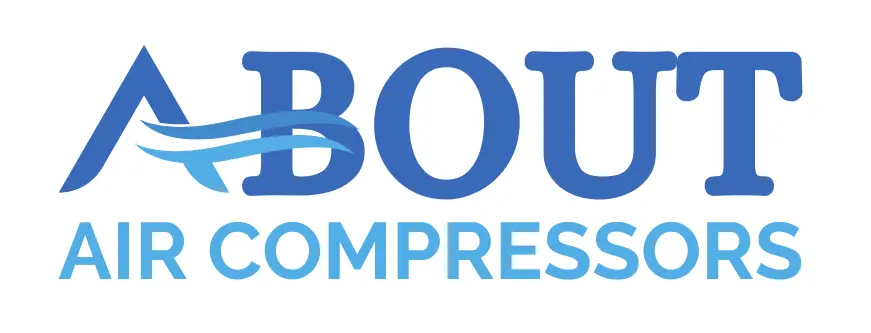Check valves come in a wide array of sizes and so it is important that you select the right size for your air compressor. Proper sizing is very essential and will ensure that the air compressor check valve works at peak efficiency and will require less downtime, maintenance or result in a dreaded system failure.
Table of Contents
How are check valves sized?
What size fittings do they come in?
Check valves are sized based on their pipe size at their inlet and/or outlet in inches. Common and readily available sizes include:
- 1/8″
- 1/4″
- 3/8″
- 1/2″
- 3/4″
- 1″
- 1 1/4″
- 1 1/2″
- 2″
- 3″
- 4″
- 5″
- 6″
- 8″
- 10″
This pipe size is a nominal size, not an actual measurement… it basically represents the widest thread diameter for the check valve fittings and helps mate the male and female ends of a connection.
Whether you require NPT (National Pipe Thread), BSPT (British Standard Pipe Taper) or even BSPP (British Standard Parallel Pipe) check valve connections, all these sizes listed above will be available.
This example of an air compressor pilot check valve below has a NPT pipe sizing reference chart to help ensure the right size check valve is bought.
Prices pulled from the Amazon Product Advertising API on:
Product prices and availability are accurate as of the date/time indicated and are subject to change. Any price and availability information displayed on [relevant Amazon Site(s), as applicable] at the time of purchase will apply to the purchase of this product.
Control Devices provide high-quality, dependable solutions for applications of all types of air compressors and these include a wide variety of check valves, and sizes.
Thread Gender
Do you need a male or female threaded check valve? Look for (M) NPT for male or (F) NPT for female sized check valves.
Maximum Pressure
Check valves are available to work with varying maximum pressures. You may want to get one that can withstand a higher amount of pressure than you require to play it safe. Some check valves maximum pressure include but are not limited to:
- 50 PSI
- 100 PSI
- 125 PSI
- 150 PSI
- 250 PSI
- 500 PSI
- 1000 PSI
- 3000 PSI
Cracking Pressure
Cracking pressure also known as the minimum opening pressure, is the minimum upstream pressure required to open a check valve enough to allow detectable flow. Check valves are designed for different cracking pressures commonly 0.1 PSI, 1 PSI and 3 PSI but also come anywhere in between and can reach as high as 25 PSI.
Minimum and Maximum Temperature
You must find check valves that can operate at the minimum and maximum temperatures of your air compressor. Typical ranges of temperatures you can narrow your check valve search down to are presented in the table below. Of course, any combination may be possible.
| Minimum Temperature Ranges (F) | Maximum Temperature Ranges (F) |
|---|---|
| -50 or less | Less than 200 |
| -49 to – 25 | 200 to 249 |
| -24 to 0 | 250 to 299 |
| 1 to 24 | 300 to 499 |
| 25 or greater | 500 or greater |
Check Valves Configuration
Are the check valves in-line or in-tank?
In-tank check valves are found between the pump and the tank, they’re commonly in the form of an NPT fitting with a 1/8″ (F) NPT unloader port. In-tank check valves are necessary during unload periods for an air compressor.
In-line check valves are similar and can also carry a 1/8″ (F) NPT port, however, be cautious with these and ensure they have a temperature rating suitable for your compressor use.
DO NOT select a flat type in-line valve for your air compressor as they’re designed for liquid, so may not have the required pressure or temperature rating.
Important Considerations When Sizing Check Valves
An undersized valve will cause higher pressure losses and create excessive noise and vibration, and an oversized valve can lead to excessive valve leakage, premature wear and failure of the valve’s internal components.
Choosing the best valve will ensure proper flow, optimize overall efficiency and enhance the integrity and longevity of any fluid handling system.
If you have any questions regarding check valve sizes or are unsure what check valve you require, please leave a comment below and upload a photo if applicable so that someone can help you!
Additional valve reading:
- Types of Compressed Air Valves – Guide To Pneumatic Valves
- Pneumatic Flow Control Valves – What Are They, How Do They Work?
- Air Compressor Air Line Non-Return valves/Inline (In The Air Line) Air Check Valves Explained
- What is Check Valve Cracking Pressure
- Air Compressor Troubleshooting Check Valve
- Air Compressor Unloader Valve Explained
- Unloader Valves On Twin V Piston Compressor Guide
- 5 3 Valves Explained
- 5-2 Air Valves
- 4-2 Compressed Air Valves
- 3-2 Air Valves
- Drawing a 5/3 compressed air valve
- Draw A 5/2 Air Valve
- Pneumatic Soft Start Valves
- Solenoid Pilot Air Valves
- Compressed Air Solenoid Valve Guide
- Air Compressor Auto Drain Valves Guide
- Needle Valve vs Ball Valve
- Globe Valve vs Ball Valve
- Globe Valve vs Gate Valve
- Butterfly Valve vs Gate Valve
If you have any questions regarding check valve sizes please leave a comment below with a photo if applicable so that someone can help you!



